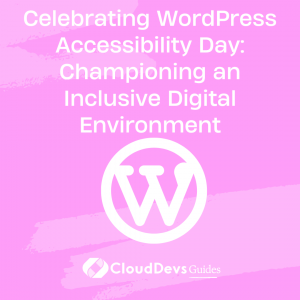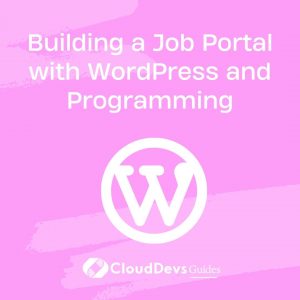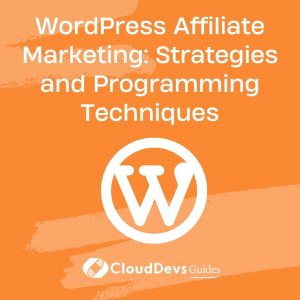Celebrating WordPress Accessibility Day: Championing an Inclusive Digital Environment
Table of Contents
The online world is full of unique experiences and opportunities, but for those with disabilities, accessing these experiences may present challenging barriers. Recognizing the importance of accessibility and inclusion in digital spaces, the WordPress community hosts the annual “WordPress Accessibility Day.” It is a special event that aims to celebrate, promote, and enhance accessibility within the WordPress ecosystem.
Table of Contents
Why is Accessibility Important?
Accessibility is a fundamental human right. It ensures that everyone, regardless of their abilities, can access and benefit from digital spaces, including those created with WordPress. This means making sure that web content, features, and technologies are designed and developed so that all people, particularly those with disabilities, can use them.
Moreover, an accessible website doesn’t only benefit individuals with disabilities; it improves overall user experience, expands audience reach, boosts SEO, and aligns with legal and ethical standards.
WordPress Accessibility Day: What’s It All About?
WordPress Accessibility Day is an annual event organized by a group of WordPress enthusiasts passionate about making the platform more accessible. The day is dedicated to sharing knowledge, raising awareness, and encouraging dialogue about the importance of web accessibility.
This event brings together WordPress developers, designers, users, and accessibility professionals worldwide. It provides a platform for knowledge sharing, collaboration, and learning about the best practices and solutions to make WordPress more accessible.
The event usually comprises webinars, workshops, panel discussions, and Q&A sessions. Participants can expect to learn about accessible themes and plugins, strategies for creating accessible content, web standards and laws related to accessibility, and much more.
Building a More Inclusive WordPress
The WordPress Accessibility Day isn’t just about learning; it’s also about doing. By attending this event, participants can contribute to the collective effort to make WordPress more accessible.
In the spirit of WordPress’s open-source ethos, everyone is encouraged to contribute to the cause. Whether it’s by designing an accessible WordPress theme, developing a plugin with accessibility in mind, writing accessible content, or advocating for accessibility, every effort counts.
The Future of WordPress Accessibility
While significant strides have been made to improve accessibility in WordPress, there’s always more to be done. WordPress Accessibility Day serves as a reminder of the continuous journey towards inclusivity and the importance of making the digital world accessible for everyone.
The event’s vision extends beyond a single day—it’s about instilling a commitment to accessibility that lasts all year round. By working together, the WordPress community can foster an inclusive digital environment that truly benefits all.
Whether you’re a seasoned WordPress professional or just getting started with the platform, WordPress Accessibility Day offers valuable insights and the chance to contribute to a more inclusive web.
So, mark your calendars for the next WordPress Accessibility Day, participate, learn, share, and help make the digital world accessible to all.


